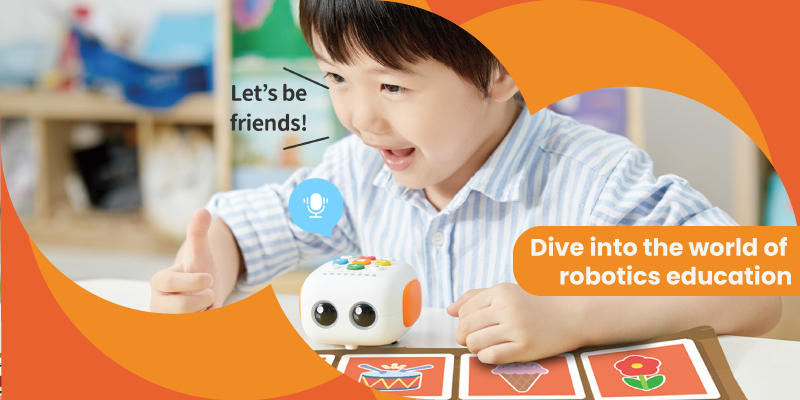What is the Universe like? How vast is its presence? What elements does the Universe comprise? In today’s lesson, “Travel in the Universe,” young learners aged 6-11 years will embark on an artistic expedition using the Matatalab Coding kit to explore the unexplored. This coding for kids activity combines the teachings of arts, coding, and geometry for cross-curricular emphasis and to make hands-on project work more fun. Let us learn more about the key aspects of this lesson and the objectives it aims to achieve.
What is the Matatalab Coding Kit?
The coding set by Matatalab includes the MatataBot Robot which can be made to sing, draw, and teach coding concepts like loops and functions. It is an entry-level Coding Set that allows students of ages 4+ years to get hands-on with coding while bringing infinite imaginative ideas to life. Coding for kids is now more meaningful with Matatalab!
What’s included in the Matatalab Artist Add-On package?
The Matatalab Artist Add-On is an expansion pack designed to enhance the capabilities of the MatataBot, allowing children to draw intricate shapes and graphics through coding. This set helps kids advance their understanding of geometry and programming. It includes the following.
- Angle Coding Blocks: 20 blocks covering angles like 30, 36, 45, 60, 72, 108, 120, 135, 144, and 150 degrees.
- Colored Pens: 3 good quality-colored pens that fit into the Matata Bot’s pen holder.
- Warm-up Cards: 3 flashcards with 6 exercises as samples to help users get familiar with drawing using the MatataBot.
Coding for Kids Lesson Plan: Travel in the Universe
The main aim of this session is to help students make use of the MatataBot and the Artist Add-on accessories to code their way into drawing different shapes on paper. By leveraging the tangible coding elements of Matatalab, students will create an amazing artwork that depicts the Universe. Since it is a collaborative project, every child in the class will contribute to the activity and gain confidence to interact with peers. Such coding for kids’ activities proves that early exposure to technology can build a strong foundation for future learning.
Objectives
- Teach students how to use Matatalab to draw different shapes.
- Enable little ones to use MatataBot to draw various geometric figures like, pentagrams & triangles on large white paper.
- Encourage students to work in teams to complete the artwork.
- Enhance students’ understanding of the Universe and its components.
Key Vocabulary
Familiarize learners with these common words that are going to be a part of the activity.
- Universe: The universe encompasses all of space and time, including planets, stars, galaxies, and all other forms of matter and energy.
- Pentagram: A five-pointed star shape, also known as a pentalpha or star pentagon.
- Triangle: A three-sided polygon with three edges and vertices, fundamental in geometry.
- Square: A four-sided regular quadrilateral with equal sides and angles of 90 degrees.
- Circle: A shape consisting of all points in a plane that are equidistant from a given point, known as the center.
Lead-in & Guided Activity (5 minutes):
Begin by showing students a picture of the Universe on a projector in the classroom. Discuss how beautiful the vastness of space is and talk about galaxies, stars, & planets. Next, explain how to use MatataBot to draw shapes in a step-by-step manner. Demonstrate the basic functions and controls, ensuring that students understand how to program the Robot to draw specific shapes.
Independent Activity (30 minutes):
During this phase, students will:
- Use MatataBot to draw shapes: Students will program MatataBot to draw the various shapes using the Angle Coding Blocks. Use arrow keys to navigate the Bot and choose the appropriate angel blocks 30° – 150°. Use any of the colored pens and place them in the MatataBot pen holding place to add color to the Universe.
- Color the universe image with their own imagination: Once the shapes are drawn, students will color the image. Encourage them to use their creativity to depict the Universe in vibrant colors.
- Collaborate to get the artwork done: Emphasize teamwork and collaboration. Students should work together to ensure the shapes connect and form a cohesive representation of the universe.
Feedback & Extension (10 minutes):
After completing the artwork, gather students to introduce all the elements in the artwork. Discuss the different kinds of shapes and their features. Engage students in storytelling about traveling in the Universe. Encourage them to use their imaginations to describe what it would be like to journey through space, using the power of coding for kids to bring their stories to life.






Recent Comments